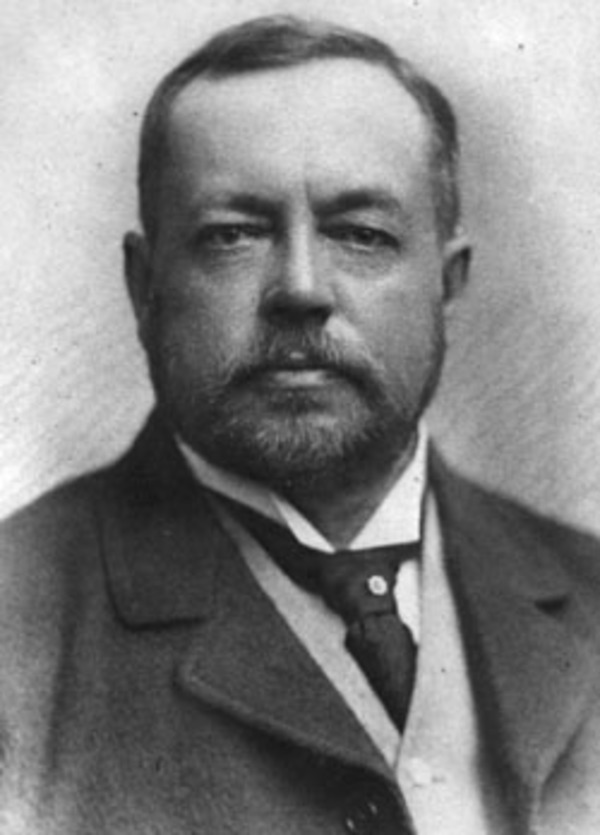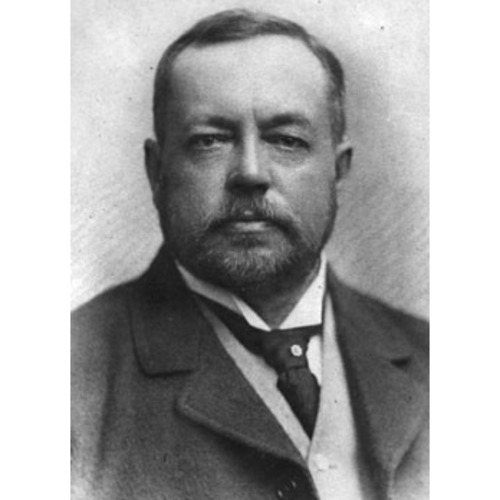
Source: Link
KETCHUM, HENRY GEORGE CLOPPER, engineer; b. 26 Feb. 1839 in Fredericton, of loyalist descent, son of Richard Ketchum and Mary Anne —; m. 21 Aug. 1866 Sarah E. Milner in Sackville, N.B.; they had no children; d. 8 Sept. 1896 in Amherst, N.S.
Henry George Clopper Ketchum received his grammar school education at the Fredericton Collegiate School and in February 1854 enrolled for a series of lectures on civil engineering being given by English engineer McMahon Cregan at King’s College, Fredericton. Early in April the college excused engineering students from attending classes to enable them to gain practical experience in the field of railway building, which was the major engineering activity of the time. From 1856 to 1860 Ketchum was employed during the summers in the construction of the European and North American Railway, which was to connect Halifax with Bangor, Maine [see Edward Barron Chandler*]. He was first a telegrapher and then a surveyor before his abilities earned him promotion to assistant construction engineer on the line from Saint John to Shediac, under chief engineer Alexander Luders Light. When King’s College became the University of New Brunswick by royal charter in 1859, a special undergraduate course in civil engineering and surveying was instituted. The first diploma in civil engineering would be awarded to Ketchum in June 1862.
The year 1860 found Ketchum in the snake-infested jungles of Brazil, employed as agent and district engineer for James Fox and Sons, contractors for construction of the Santos and São Paulo Railway. He was placed in charge of a particularly difficult section of terrain. The Megy viaduct, consisting of 12 spans, supported by iron columns 180 feet high, was completed ahead of schedule under his supervision. When the project was finished, Ketchum travelled to London, where he was awarded a bonus of £500 by Sir James Fox “in testimony to his ability as an engineer and his integrity and zeal as agent.” Ketchum’s reputation as a skilful and energetic engineer was established. While in London, he was introduced to the most eminent engineers in England. He would be elected as an associate of the British Institution of Civil Engineers in 1866 and would become a full member in 1878.
Ketchum returned to New Brunswick in 1865 as resident engineer for the International Contracting Company, which had been commissioned to build a railway from Moncton to Truro. Ketchum was charged with construction of the Eastern Extension of the European and North American from Painsec Junction, six miles out of Moncton, to the Missaguash River on the Nova Scotia border. This section of railway was the cause of an extended dispute since Albert James Smith*, premier of New Brunswick, had conspired to have the line follow a circuitous route so that it would pass through his home town, Dorchester. International Contracting went into bankruptcy as a result of the delays and Ketchum personally discharged the company’s debts. Construction was then taken over by Clark, Punchard and Company. Ketchum acted as sub-contractor until 1868, when his contract was annulled. This action on the part of the company precipitated “a notable law-suit” in the city of Saint John. The case was eventually decided in Ketchum’s favour and he was awarded a cash settlement of $95,000.
While surveying railway lines across the Chignecto Isthmus, Ketchum conceived the scheme for which he would become famous. The historic crossroads of the Maritimes, Chignecto provides a land-bridge between the peninsula of Nova Scotia and mainland New Brunswick, but at the same time presents a barrier between Cumberland Basin and Baie Verte, and consequently an obstacle to shipping between the Bay of Fundy and the Gulf of St Lawrence. Since the first European settlement of the area, plans have been put forward for a canal through the isthmus to facilitate shipping.
A “ship railway,” as conceived by Ketchum, would lift ships out of the water, carry them on rails across the isthmus, and deposit them in the water on the other side. In 1882 the Chignecto Marine Transport Railway Company was incorporated, with Ketchum as managing director. Parliament undertook to provide an annual subsidy of $150,000 for 25 years, provided the line was completed within seven years and was kept in good repair. In 1888, however, the company was obliged to ask for an extension of time, to 1892.
Construction commenced in October 1888 and continued apace for several years. By 1892 docks had been built at Fort Lawrence on Cumberland Basin and at Tidnish Bridge on Baie Verte, a wide rail bed – almost without gradient, over “bottomless bogs” and marsh – had been completed for 16 of the required 17 miles, and 13 miles of track had been laid. Every inch of the way had been personally inspected by Ketchum, whose boundless energy prompted even the lowliest navvy to work for “Ketchum’s dream.” An imposing man weighing over 200 pounds and standing more than six feet tall, he inspired awe in most of his employees.
The project was in constant financial difficulties, particularly after Baring Brothers and Company, the London banking firm that had backed the scheme, failed in 1890. A request in 1892 for another extension was turned down by the Canadian government on the grounds that the company had insufficient capital. By this time $3,500,000 had been spent on the project and Ketchum estimated that a further $1,500,000 was required. The money was raised by 1896 but at this point even the efforts of Sir Charles Tupper* could not persuade parliament to give further encouragement to the scheme. Seven years later the dominion government would move to compensate the shareholders in the company, who had lost a considerable sum in the attempt to build the railway.
After travelling from his “gingerbread cottage” at Tidnish to dine at the Amherst Hotel in September 1896, Ketchum suffered “an affection of the heart” and passed away, sitting quietly on the verandah. Some say he died of a broken heart when his hopes died on the windy marshes of Chignecto.
The remains of Ketchum’s ship railway have all but disappeared. A number of buildings were taken down, and the large frame-houses constructed for “the bosses” at the Cumberland Basin terminus were hauled up Fort Cumberland Ridge, where they stand today on prosperous farms. Rails and machinery that Ketchum had installed were dismantled during World War I to support the military effort. Local farmers pillaged stone for the foundations of barns, and larger stones were trucked to Cape Tormentine, to be used in the breakwater for the ferry terminal there. Thus little now survives of Ketchum’s dream.
[In addition to the sources cited below, this biography is based on the author’s interviews with Mrs Pearl MacD. Atkins of Tidnish Bridge, N.S., who lives beside the remarkable arched stone bridge built by Henry George Clopper Ketchum to carry ships over the Tidnish River. e.c.b.]
Ketchum is the author of The cost, feasibility and advantage of a ship railway across the Isthmus of Chignecto (Fredericton, 1880); The Chignecto Marine Transport Railway: the isthmian transit between the Bay of Fundy and the Gulf of St. Lawrence (London, 1883); The Chignecto ship railway, will it pay? (Saint John, N.B., 1887); The Chignecto ship railway, the substitute for the Baie Verte canal ([Fredericton?, 1892?]); Ship transportation and the Chignecto ship railway: papers read before the Canadian Society of Engineers, at Montreal, Dec. 29th, 1891 ([Montreal?], 1892); and The Chignecto ship railway (Boston, [1893]). He edited Public opinion on the Chignecto ship railway, and the Baie Verte canal ([Sackville, N.B.?], 1887).
Mount Allison Univ. Arch. (Sackville), Acc.8370, St. Ann’s and St. Paul’s Anglican Church (Sackville), reg. of marriages, 21 Aug. 1866; Parks Canada Webster Chignecto coll. NA, MG 30, D44. N.B. Museum, New Brunswick Hist. Soc. papers, G. J. Dibblee papers and H. G. C. Ketchum papers; Tilley family papers. UNBL, MG H53. Can., House of Commons, Debates, 17 April 1888, 2 March 1896. St. John Weekly Sun, 16 Sept. 1896. Prominent people of New Brunswick . . . , comp. C. H. McLean (n.p., 1937). The University of New Brunswick memorial volume . . . , ed. A. G. Bailey (Fredericton, 1950). D. E. Stephens, “The Chignecto ship railway,” Nova Scotia Hist. Quarterly (Halifax), 8 (1978): 135–45.
Cite This Article
Edward Chapman Bowes, “KETCHUM, HENRY GEORGE CLOPPER,” in Dictionary of Canadian Biography, vol. 12, University of Toronto/Université Laval, 2003–, accessed April 4, 2025, https://www.biographi.ca/en/bio/ketchum_henry_george_clopper_12E.html.
The citation above shows the format for footnotes and endnotes according to the Chicago manual of style (16th edition). Information to be used in other citation formats:
| Permalink: | https://www.biographi.ca/en/bio/ketchum_henry_george_clopper_12E.html |
| Author of Article: | Edward Chapman Bowes |
| Title of Article: | KETCHUM, HENRY GEORGE CLOPPER |
| Publication Name: | Dictionary of Canadian Biography, vol. 12 |
| Publisher: | University of Toronto/Université Laval |
| Year of revision: | 1990 |
| Access Date: | April 4, 2025 |



